Do-Yup Kim
Self-Improving Interference Management Based on Deep Learning With Uncertainty Quantification
Jan 24, 2024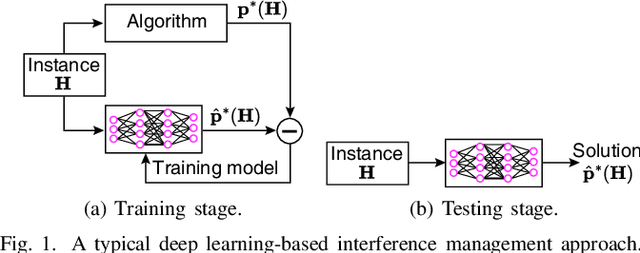
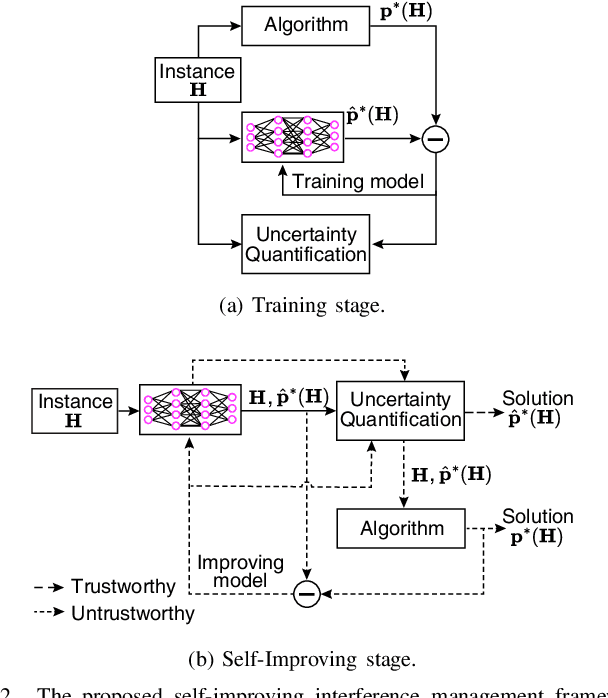
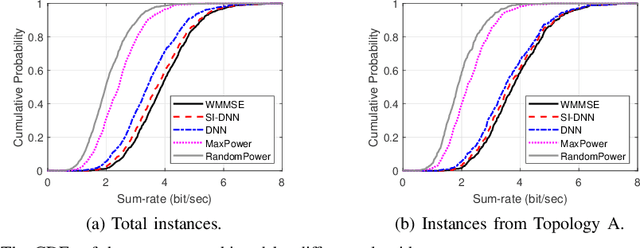

Abstract:This paper presents a groundbreaking self-improving interference management framework tailored for wireless communications, integrating deep learning with uncertainty quantification to enhance overall system performance. Our approach addresses the computational challenges inherent in traditional optimization-based algorithms by harnessing deep learning models to predict optimal interference management solutions. A significant breakthrough of our framework is its acknowledgment of the limitations inherent in data-driven models, particularly in scenarios not adequately represented by the training dataset. To overcome these challenges, we propose a method for uncertainty quantification, accompanied by a qualifying criterion, to assess the trustworthiness of model predictions. This framework strategically alternates between model-generated solutions and traditional algorithms, guided by a criterion that assesses the prediction credibility based on quantified uncertainties. Experimental results validate the framework's efficacy, demonstrating its superiority over traditional deep learning models, notably in scenarios underrepresented in the training dataset. This work marks a pioneering endeavor in harnessing self-improving deep learning for interference management, through the lens of uncertainty quantification.
Remote Bio-Sensing: Open Source Benchmark Framework for Fair Evaluation of rPPG
Aug 18, 2023Abstract:rPPG (Remote photoplethysmography) is a technology that measures and analyzes BVP (Blood Volume Pulse) by using the light absorption characteristics of hemoglobin captured through a camera. Analyzing the measured BVP can derive various physiological signals such as heart rate, stress level, and blood pressure, which can be applied to various applications such as telemedicine, remote patient monitoring, and early prediction of cardiovascular disease. rPPG is rapidly evolving and attracting great attention from both academia and industry by providing great usability and convenience as it can measure biosignals using a camera-equipped device without medical or wearable devices. Despite extensive efforts and advances in this field, serious challenges remain, including issues related to skin color, camera characteristics, ambient lighting, and other sources of noise and artifacts, which degrade accuracy performance. We argue that fair and evaluable benchmarking is urgently required to overcome these challenges and make meaningful progress from both academic and commercial perspectives. In most existing work, models are trained, tested, and validated only on limited datasets. Even worse, some studies lack available code or reproducibility, making it difficult to fairly evaluate and compare performance. Therefore, the purpose of this study is to provide a benchmarking framework to evaluate various rPPG techniques across a wide range of datasets for fair evaluation and comparison, including both conventional non-deep neural network (non-DNN) and deep neural network (DNN) methods. GitHub URL: https://github.com/remotebiosensing/rppg
Dynamic Joint Scheduling of Anycast Transmission and Modulation in Hybrid Unicast-Multicast SWIPT-Based IoT Sensor Networks
Jul 17, 2023Abstract:The separate receiver architecture with a time- or power-splitting mode, widely used for simultaneous wireless information and power transfer (SWIPT), has a major drawback: Energy-intensive local oscillators and mixers need to be installed in the information decoding (ID) component to downconvert radio frequency (RF) signals to baseband signals, resulting in high energy consumption. As a solution to this challenge, an integrated receiver (IR) architecture has been proposed, and, in turn, various SWIPT modulation schemes compatible with the IR architecture have been developed. However, to the best of our knowledge, no research has been conducted on modulation scheduling in SWIPT-based IoT sensor networks while taking into account the IR architecture. Accordingly, in this paper, we address this research gap by studying the problem of joint scheduling for unicast/multicast, IoT sensor, and modulation (UMSM) in a time-slotted SWIPT-based IoT sensor network system. To this end, we leverage mathematical modeling and optimization techniques, such as the Lagrangian duality and stochastic optimization theory, to develop an UMSM scheduling algorithm that maximizes the weighted sum of average unicast service throughput and harvested energy of IoT sensors, while ensuring the minimum average throughput of both multicast and unicast, as well as the minimum average harvested energy of IoT sensors. Finally, we demonstrate through extensive simulations that our UMSM scheduling algorithm achieves superior energy harvesting (EH) and throughput performance while ensuring the satisfaction of specified constraints well.
Collaborative Policy Learning for Dynamic Scheduling Tasks in Cloud-Edge-Terminal IoT Networks Using Federated Reinforcement Learning
Jul 02, 2023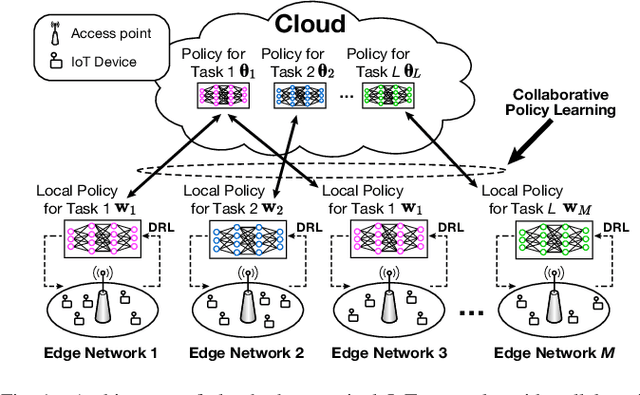
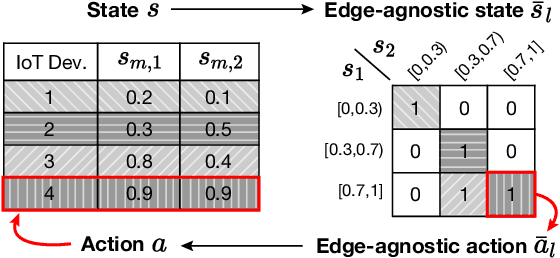
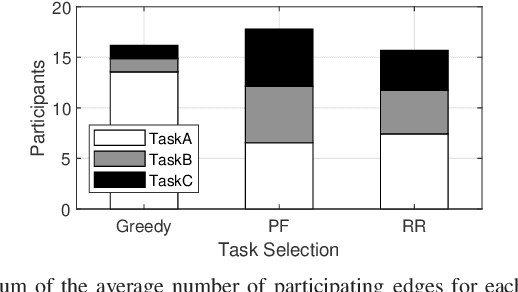

Abstract:In this paper, we examine cloud-edge-terminal IoT networks, where edges undertake a range of typical dynamic scheduling tasks. In these IoT networks, a central policy for each task can be constructed at a cloud server. The central policy can be then used by the edges conducting the task, thereby mitigating the need for them to learn their own policy from scratch. Furthermore, this central policy can be collaboratively learned at the cloud server by aggregating local experiences from the edges, thanks to the hierarchical architecture of the IoT networks. To this end, we propose a novel collaborative policy learning framework for dynamic scheduling tasks using federated reinforcement learning. For effective learning, our framework adaptively selects the tasks for collaborative learning in each round, taking into account the need for fairness among tasks. In addition, as a key enabler of the framework, we propose an edge-agnostic policy structure that enables the aggregation of local policies from different edges. We then provide the convergence analysis of the framework. Through simulations, we demonstrate that our proposed framework significantly outperforms the approaches without collaborative policy learning. Notably, it accelerates the learning speed of the policies and allows newly arrived edges to adapt to their tasks more easily.
Blockchain-Enabled Federated Learning: A Reference Architecture Incorporating a DID Access System
Jun 19, 2023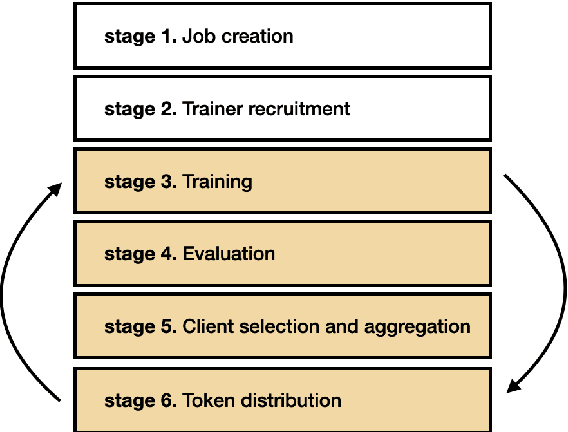
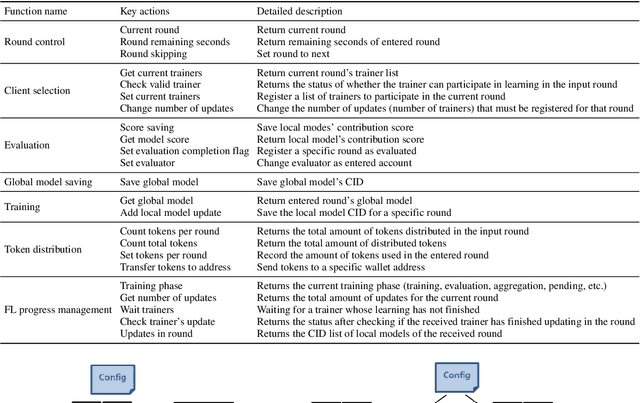
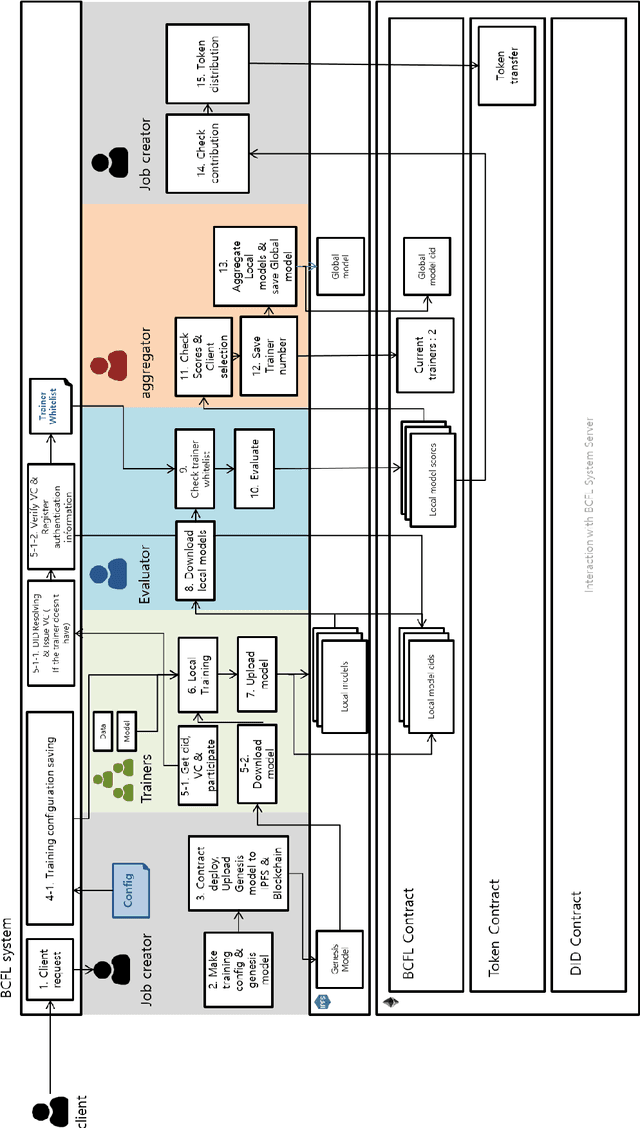
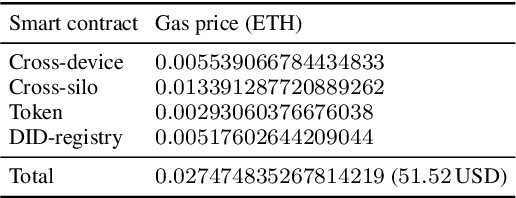
Abstract:Recently, Blockchain-Enabled Federated Learning (BCFL), an innovative approach that combines the advantages of Federated Learning and Blockchain technology, is receiving great attention. Federated Learning (FL) allows multiple participants to jointly train machine learning models in a decentralized manner while maintaining data privacy and security. This paper proposes a reference architecture for blockchain-enabled federated learning, which enables multiple entities to collaboratively train machine learning models while preserving data privacy and security. A critical component of this architecture is the implementation of a decentralized identifier (DID)-based access system. DID introduces a decentralized, self-sovereign identity (ID) management system that allows participants to manage their IDs independently of central authorities. Within this proposed architecture, participants can authenticate and gain access to the federated learning platform via their DIDs, which are securely stored on the blockchain. The access system administers access control and permissions through the execution of smart contracts, further enhancing the security and decentralization of the system. This approach, integrating blockchain-enabled federated learning with a DID access system, offers a robust solution for collaborative machine learning in a distributed and secure manner. As a result, participants can contribute to global model training while maintaining data privacy and identity control without the need to share local data. These DIDs are stored on the blockchain and the access system uses smart contracts to manage access control and permissions. The source code will be available to the public soon.
 Add to Chrome
Add to Chrome Add to Firefox
Add to Firefox Add to Edge
Add to Edge